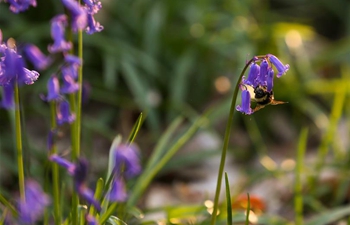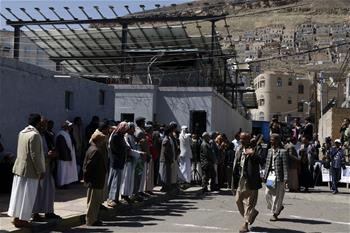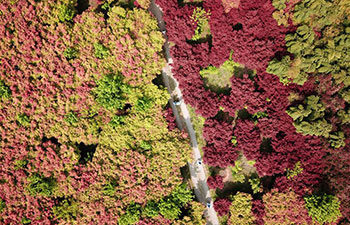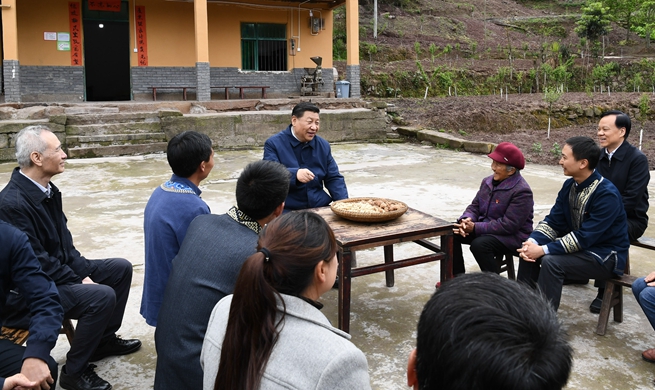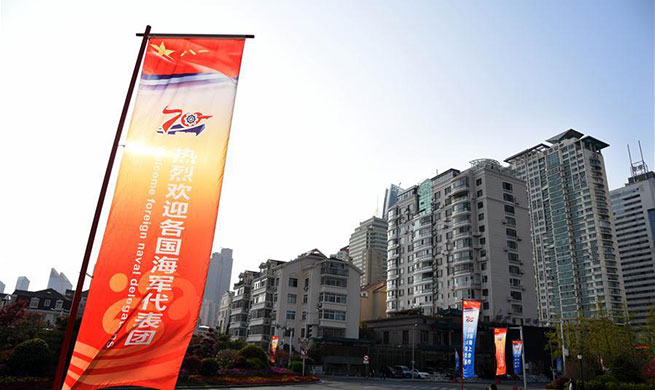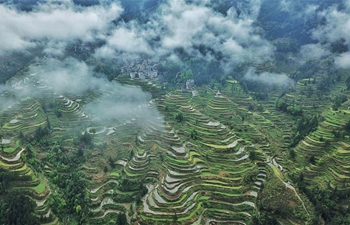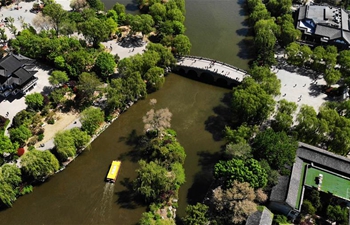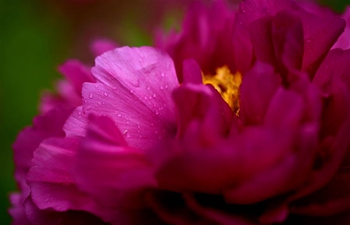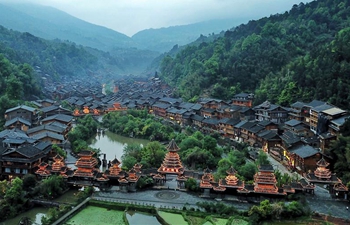By Ejidiah Wangui
NAIROBI, April 18 (Xinhua) -- Under the scorching sun in Kenya's Turkana located about 700 km from Nairobi, a group of women have slowly been leading a green revolution amid a biting drought that has affected both animals and civilians.
The 10 women are determined to change the region's hunger narrative that has been told for decades on end.
Even as the county, which is said to be hard hit by ongoing drought, continues to rely on food donations for survival, the women have defied all the prevailing conditions to grow vegetables and fruits.
Pauline Lemlemichoi, women's group chairperson said the journey traces back 20 years ago when they thought of experimenting with farming.
They thought they would fail as soon as they started as the region is generally dry in a good part of the year. They were wrong, since their experiment has now been their source of livelihood since then.
"It is amazing how this whole idea turned out. We now know for this as we supply vegetables, fruits and beans to most hotels and restaurants in Lodwar," said Lemlemichoi.
With the proceeds, the women have been able to sustain their families. Most members are widows who did not have sources of income when their husbands died.
Their farm, known as Aragae is located Namorkinonok village, barely five kilometers away from Lodwar.
The farm's proximity to the town which happens to be the county's economic hub means there is a ready market for their produce.
The vegetables they grow include collard greens, African night shade as well as cowpeas.
Under the scorching sun whose effects have spread across many homes in the region, you can not miss Aragae farm from a distance. Apart from vegetables, they also grow butternuts and pawpaw.
The women do not rely on rainfall to farm, they installed a drip irrigation system which Lemlemichoi credits to their success.
The water that keeps Aragae farm green and productive is sourced from a borehole in the farm and to water the crops, they have installed a solar-powered pump which also lowers the cost of operation since the sun is plenty.
"We were weaving handbags initially but we opted to venture into farming after we realized as much as we needed money, we also needed food to feed our children. The soils here are fertile and really good for farming, the only problem is water," said Lemlemichoi.
However, every time the country goes through a drought like now, their production is affected significantly, which means their income also goes down. They also recently ventured into growing coriander and watermelon.
Rebecca Lokilai, one of the farmers, said thanks to the venture, she has been able to feed her family and conquer malnutrition in her family which she had been unable to deal with before.
The women's technical advisor Lucia Lebasha, an agronomist working for Caritas Kenya, the development and humanitarian arm of the Kenya Conference of Catholic Bishops lauded the women for venturing into vegetable farming saying from the farm, they had been able to feed their families and also meet other personal needs.
According to Lebasha, Turkana soil has an immense potential for crop production but there is need to educate farmers on the gains that come with crop farming as the area is focused on livestock keeping.
"With the agronomic support from both the county government, Turkana can produce more than enough food to feed its people," said Lebasha.
She urged charities based in Turkana County to gradually move away from distribution of relief food and start engaging in food production through investing in technology-based farming.
Kenya experienced below-average short rains in 2018 that increased the food insecure population from 655,800 in the month of August to 1.2 million currently, with the 12 most affected counties having a total of 865,300 food insecure people.
Notably, the Kenyan government has provided assistance for drought mitigation during this dry season.
Turkana County has in the past financial years been among the top three counties with hefty budget allocation.
The region, owing to its commercially viable oil and water underground, is capable of sustaining Kenya for 60 years but every time the country experiences a drought, it usually suffers the worst impacts.
